Step-by-step tutorial
Step 1
Gather your materials.
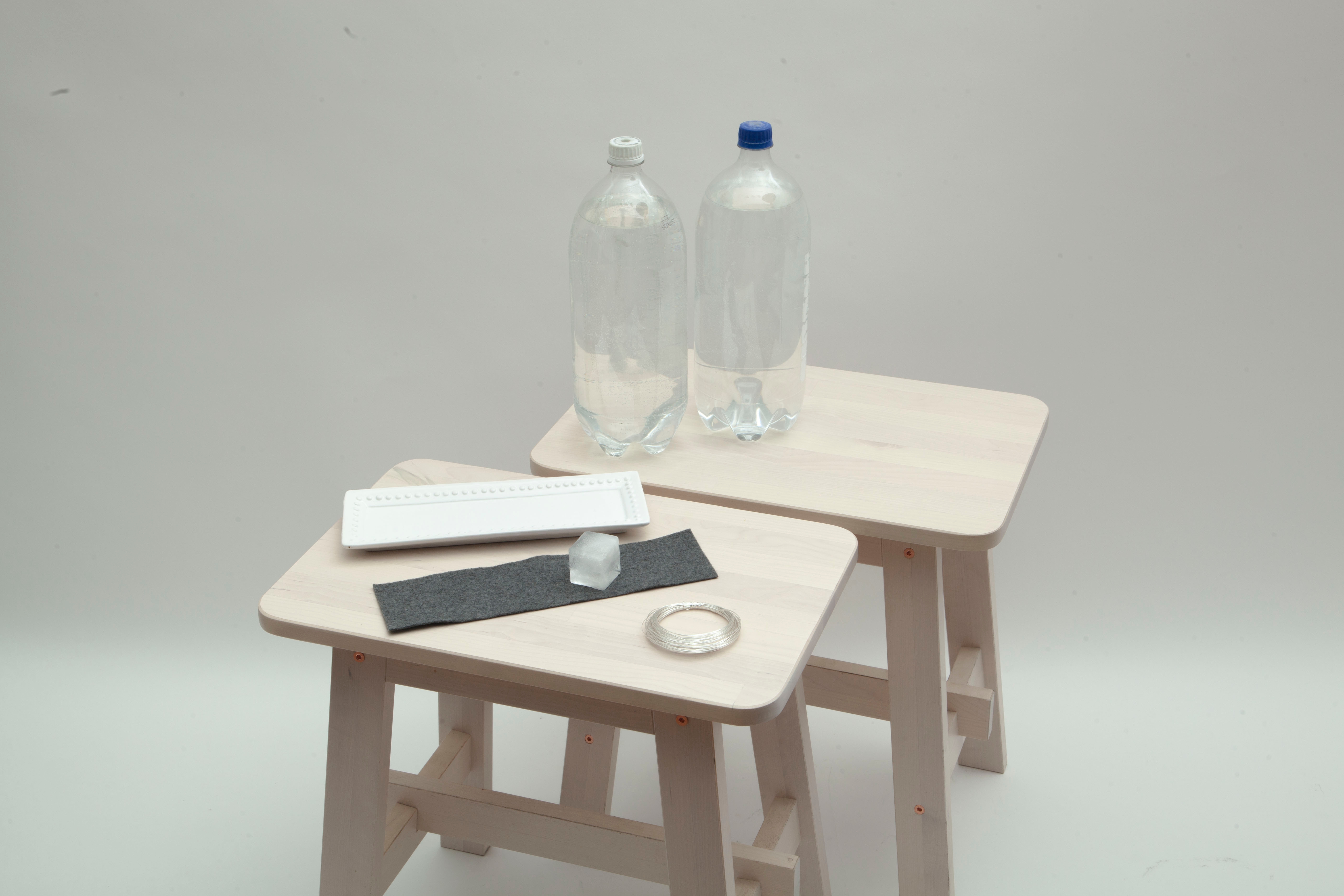
Step 2
Cut a piece of wire about 18 inches in length. Twist one end of the wire around a a weight. Twist the other end of the wire around the other weight.
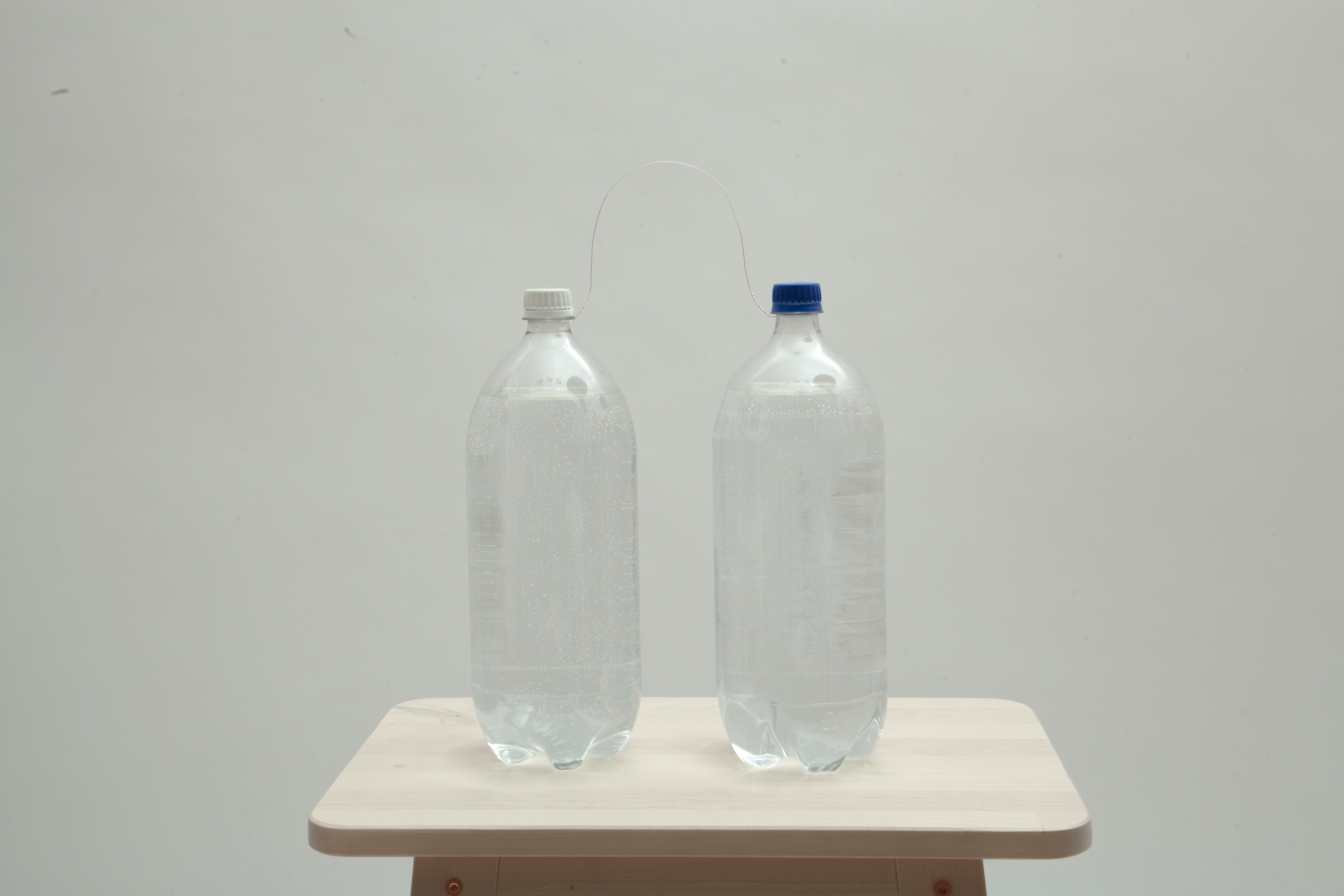
Tip
If using a soda bottle as a weight, make sure the bottle is completely filled with water.
Step 3
Place two stools about 6 inches apart from each other. Then, balance the tray across them upside down.
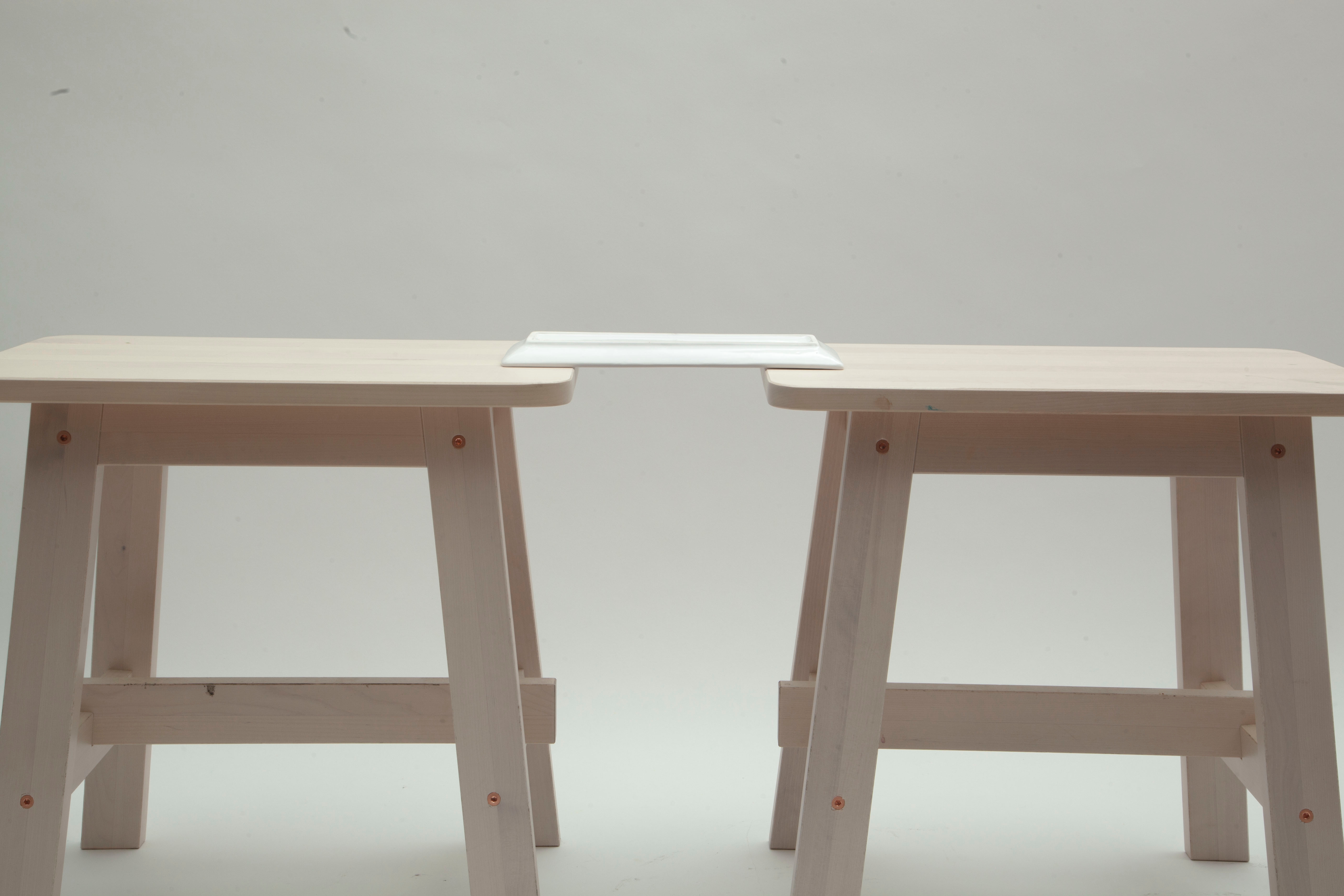
Step 4
Lay the felt on top of the tray to collect the water that accumulates as the ice cube melts. Then, place the ice cube on top of the felt.
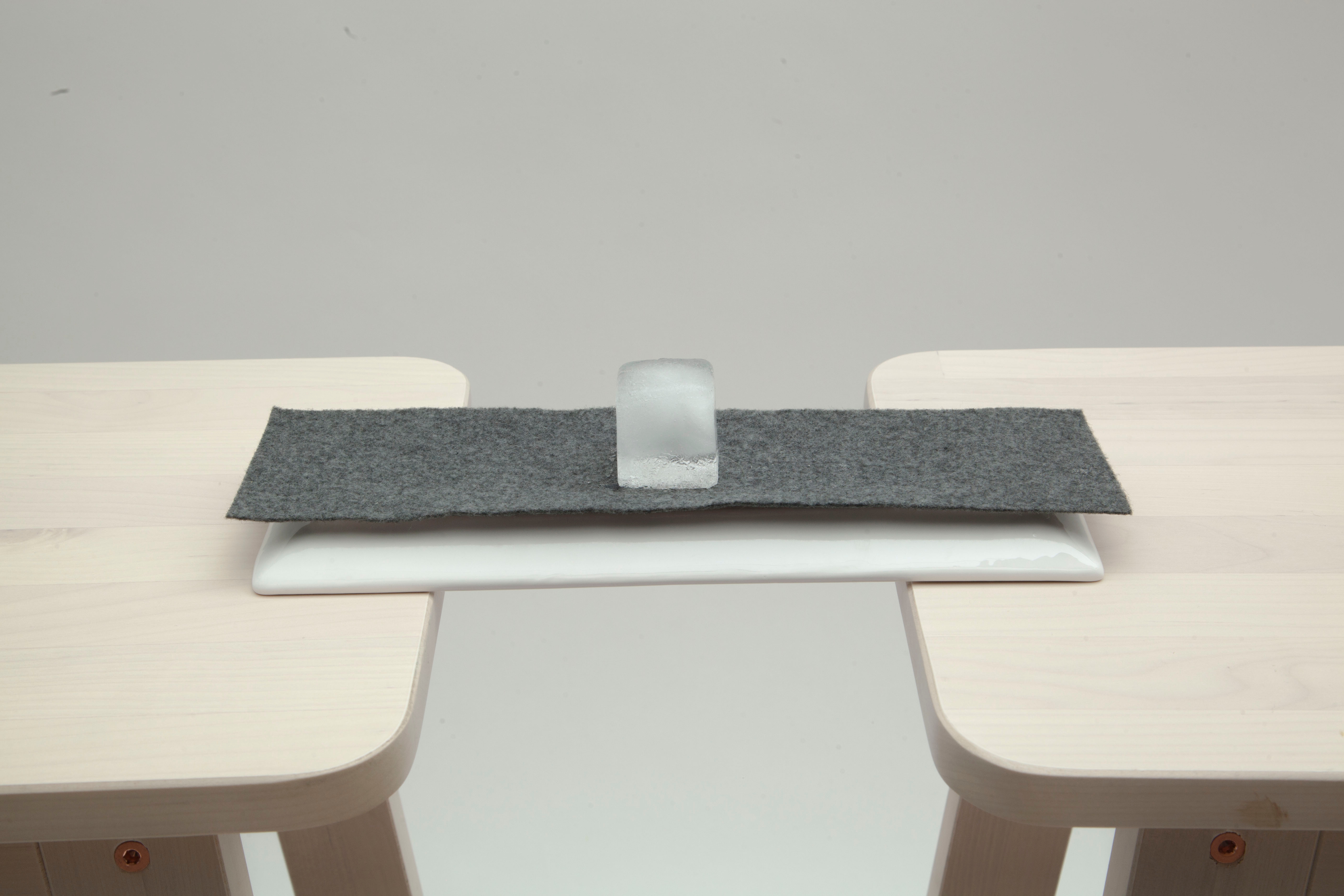
Step 5
Place the wire on top of the ice cube so that the weights are dangling on either side of the tray. Guess how long it will take the wire to cut through to the bottom of the ice cube!

Tip
If you want to see the wire as it cuts through the ice, place the wire towards one side of the cube. Don’t get too close to the edge though, otherwise your ice cube might fall over!
Step 6
Watch as the wire magically cuts through the ice cube! Time it! Was your guess correct?
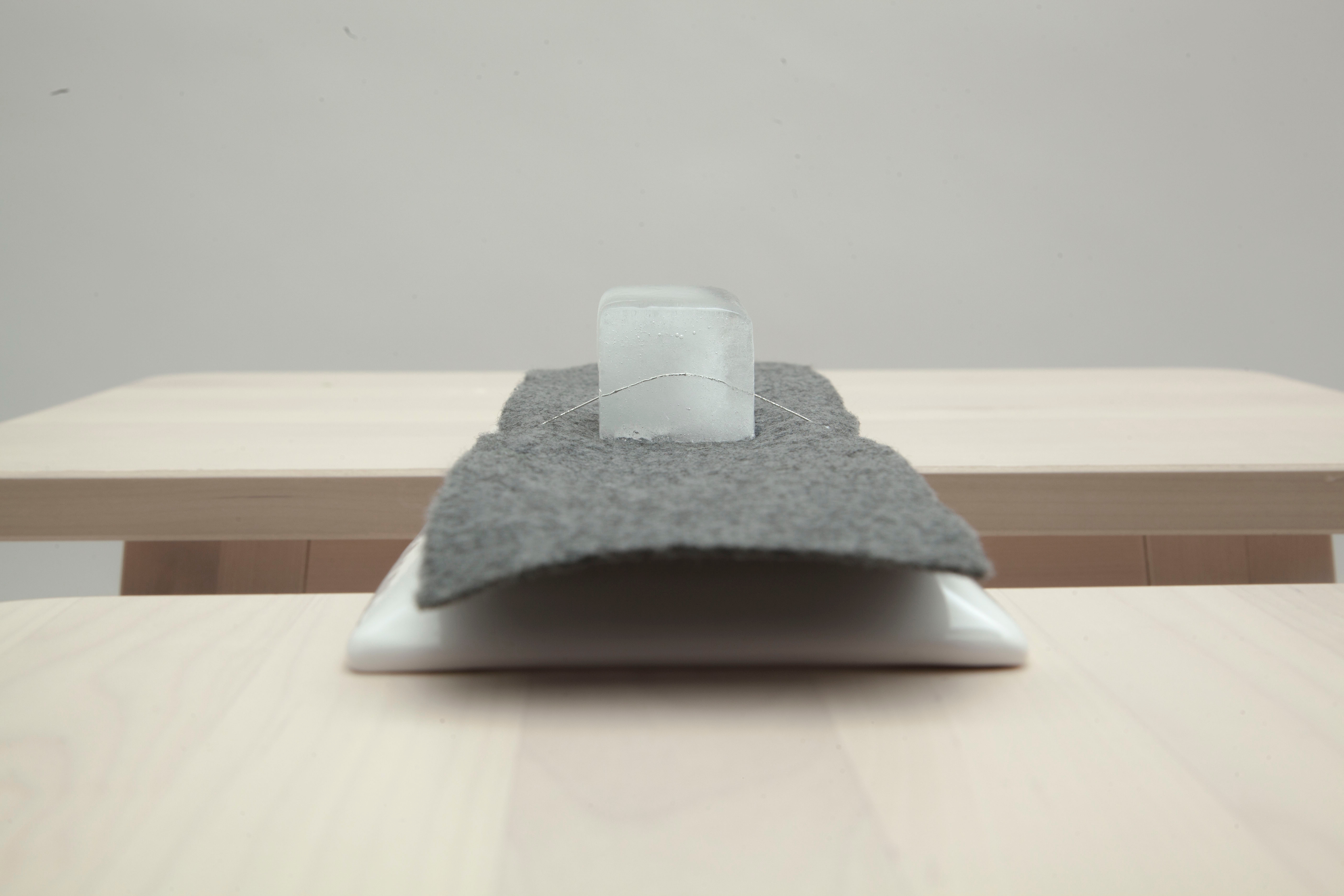
Learn more
Have you ever been to see a glacier? They are gigantic hunks of ice that can be found in the far north and south of the globe, as well as on top of some very high mountains. They are so large and deep that the ice at their bottom melts from the pressure of all the ice above, just like in this experiment. That thin layer of pressure-melted water lets glaciers slide and move, carving huge valleys into the Earth as they go.
Learn more
A weighted wire is going to cut through an ice cube, but somehow leave the ice cube whole after it passes through. This may sound like that magic trick where the assistant gets sawed in half, but there’s no magic about this! It’s all about the quirky physics of water.
The first quirk of water physics is that, unlike most other solids, ice is less dense than water. When ice gets pressurized, like by a heavy wire pressing down on it, it turns into a denser form. That denser form is liquid water. So when ice gets pressed on too hard, it melts! Bit by bit, the wire melts its way through the ice by turning a small layer into water, sinking through that water, then continuing to press downward.
But when the wire finally gets to the end, you’d hardly know that anything happened — the block of ice will still be solid! This happens because of another quirk of water physics called “regelation.” Ice melts into water because of pressure, but once that pressure is gone, any ice above or around it will cool it back down to freezing. Essentially, the ice refreezes itself shut behind the wire. As you watch this experiment happen, see if you can spot any difference between the ice behind the wire and the rest of the ice block.
